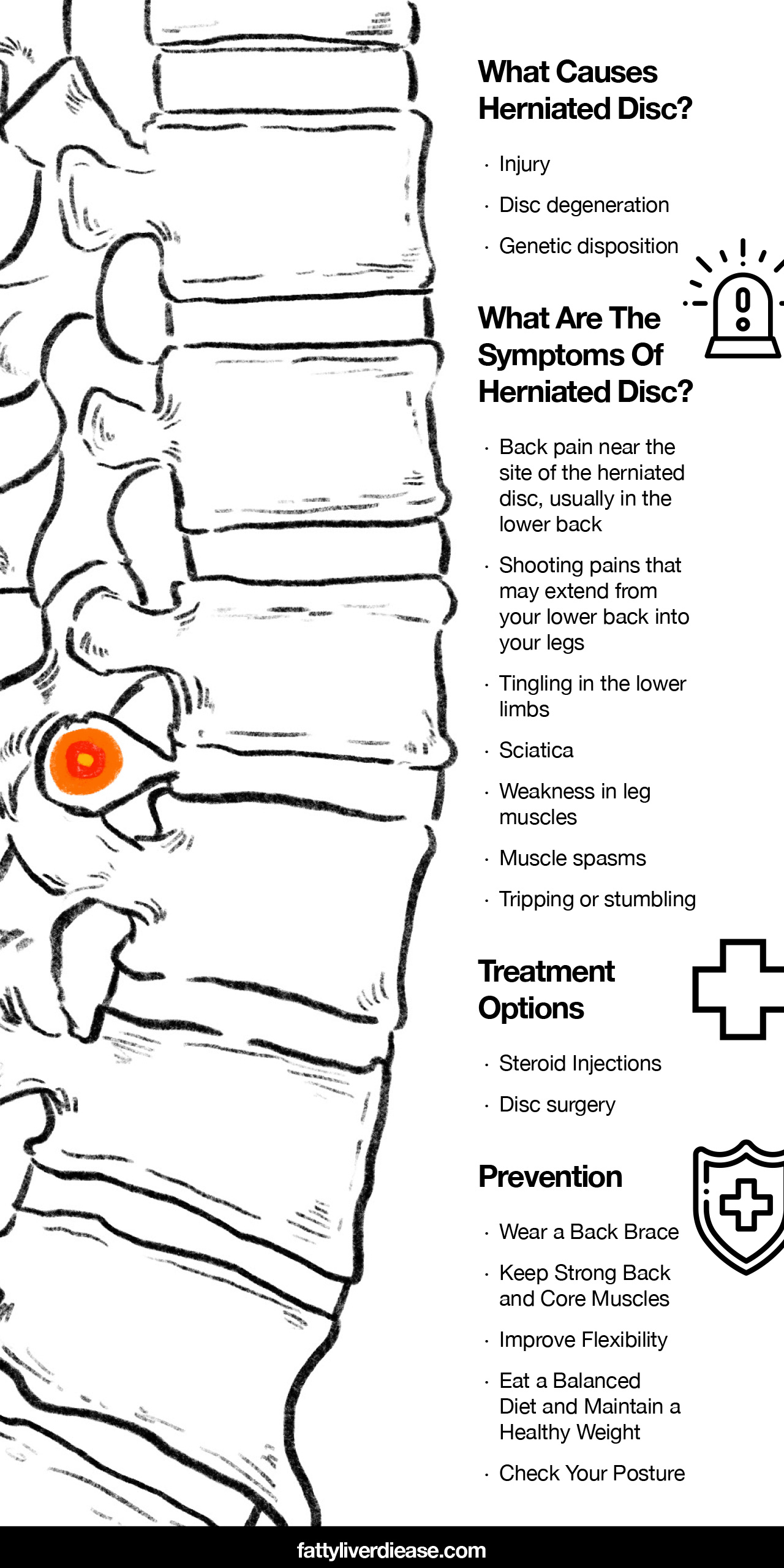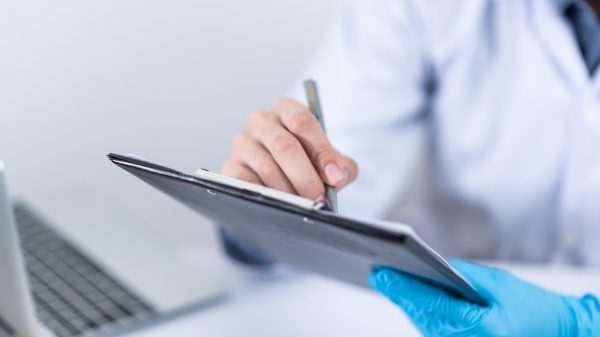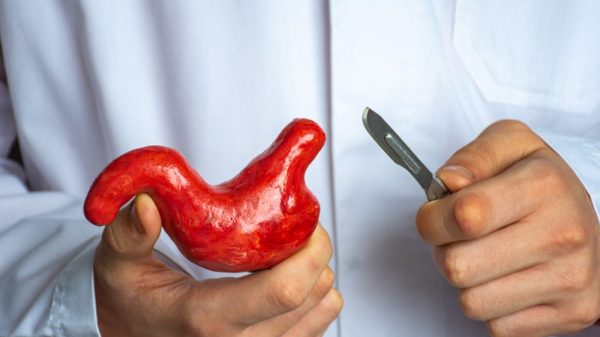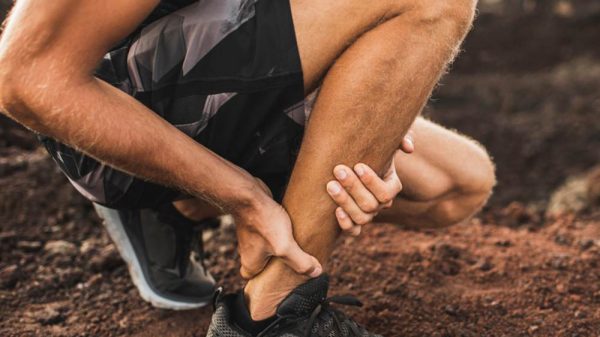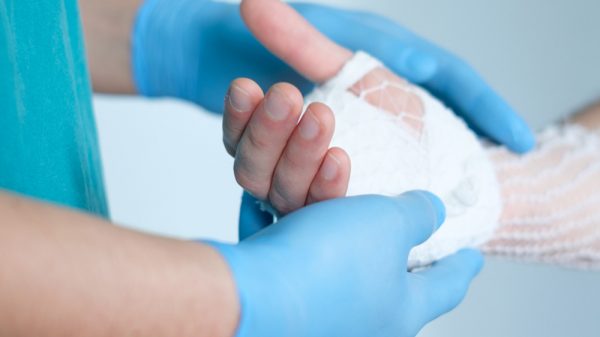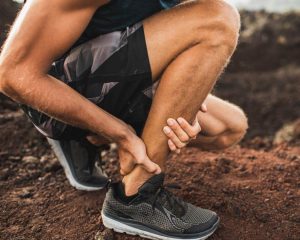Herniated discs, though common, are no fun. They are known for being extraordinarily painful and can cause radiating pain throughout the body. Is there anything you can do at home to support recovery? Thankfully, yes. Here we discuss everything you need to know about a herniated disc, improving herniated disc recovery time, and promoting healing so you can get back to your normal activities.
What Is a Herniated Disc?
Before we talk about a herniated disc is, let’s talk about the anatomy of the spine and the role of discs. The upper part of the spine can be found in your neck and is called the cervical spine. The part of your spine that we call the middle back is referred to as the thoracic spine, while the lower back is called the lumbar spine. Our spinal canal houses the spinal cord, which is a thick bundle of nerves that transmits information between our brains and the rest of our body. The muscles supporting the spine are called flexor muscles and extensor muscles.
The spine includes 33 small connected bones called vertebrae. Discs are small pads of softer tissue that are positioned between each of these vertebrae and are more specifically described as intervertebral discs. Discs function as cushions or shock absorbers to protect your back from strain and tension. Each disc has a very soft, gelatinous center called the nucleus pulposus. A harder shell called the annulus fibrosis protects the nucleus.
When a disc slips, it progresses through phases until it reaches herniation. When a disc is compressed, it may change its shape, but it will remain in place. If the injured disc begins to bulge, this means that the soft nucleus is putting pressure on the annulus. A disc protrusion describes the bursting of the nucleus through the annulus layer, tearing the tissue in the annulus. When the disc is herniated, a section of the soft nucleus has torn through the annulus and is no longer attached to the rest of the nucleus.
Symptoms of a Herniated Disc
A herniated disc is notoriously extremely painful. What many people don’t realize, however, is that you can have a herniated disc and not experience any pain or symptoms at all. Cases of herniated discs are highly individual and depend on whether the herniation is compressing a nerve in the spine.
A herniated disc that presses against the spinal cord causes significant inflammation and pain.
The majority of herniated discs occur in the lower back and is referred to as a lumbar disc herniation. If your herniated lumbar disc is symptomatic, you may experience any of the following symptoms:
- Back pain near the site of the herniated disc, usually in the lower back
- Shooting pains that may extend from your lower back into your legs
- Tingling or numb areas in the lower limbs
- Sciatica, which describes pain in the sciatic nerve that runs from the lower back all the way to the feet
- Weakness in leg muscles
- Muscle spasms
- Tripping or stumbling
In severe herniated disc cases, the herniation may impede normal nerve function and lead to nerve damage. This may exhibit difficulty controlling bladder and bowel functions.
Causes of a Herniated Disc
So, what causes a bulging disc, disc protrusion, or herniated disc? Several factors may contribute to or cause a herniated disc.
- Injury: A high-impact injury that puts pressure on your spine may cause a disc to rupture and a herniation to develop. Unnatural and forceful twisting of the spine may also result in herniation. –Heavy lifting: Lifting a heavy object with a curved back without the support of glute and leg muscles can also cause lower back discs to slip and herniate.
- Disc degeneration: Spinal disc degeneration can occur over time as part of the natural aging. Poor posture compounds disc degeneration and weakens the annulus, making it more likely that the nucleus will herniate.
- Genetic disposition: Some individuals may be prone to developing ruptured discs based on their inherited genes. Environmental changes – such as exercises, a healthy diet, and good posture – can help combat a genetic propensity for disc herniation.
Treatment Options for a Herniated Disc
If you suspect that you may be suffering from a herniated disc, your internist or neurologist will be able to assess your symptoms to determine your condition. Your physician may order a CT scan or x-ray to get a better look at your spine and assess the extent of protrusion or herniation.
If you have a mild or moderate herniated disc, more conservative treatments including plenty of bed rest and at-home treatments will support healing. Your physician may also administer steroid injections and prescribe muscle relaxants for pain relief and to help control inflammation.
However, depending on your case of a herniated disc, your physician may recommend a more aggressive intervention. More serious cases that result in intolerable or chronic pain, nerve damage, and impeded your ability to engage in daily activities may require surgery. Neurosurgeons and orthopedic surgeons perform disc surgery to repair your herniated disc. Because the severity of a herniated disc exists on a spectrum, make sure to follow your health care provider’s medical advice on what steps to take to treat your specific case.
Can a Herniated Disc Heal? How Long Does It Take?
It is possible for herniated discs to heal on its own, with at-home treatments. Recovery time for nonsurgical treatment can vary from 6 months to 1 year, though it’s possible for the pain to be relieved before that. Though a herniated disc doesn’t pull itself back together to reform an intact disc, your body will address the herniated disc to help relieve pain.
The gelatinous nucleus tissue contains more water than other body tissues. Over time, the detached part of the nucleus that is putting pressure on the spinal cord begins to lose water content. Over time, water loss causes the herniated nucleus to become smaller, which releases the pressure on your nerves.
Moreover, safe exercises and stretching can help reposition the herniation to release any pressure it may be exerting on the spinal cord.
Finally, the last mechanism of healing stems from your body’s immune response. Your body’s immune system will recognize the herniated disc as a threat to your safety and wellbeing. In response, it will work to relieve inflammation and pain associated with the herniated disc.
Steps for Supporting Herniated Disc Healing at Home
If your physician advises you to treat your herniated disc at home, there are many steps you can take to support healing. Following all of these steps is vital for shortening recovering time and relieving pain. Keep in mind that if the pain worsens, you have trouble moving, or you notice worrisome new numbness or tingling, contact your physician.
1. Get Plenty of Rest
It’s important not to strain your back after you’ve suffered a herniated disc. Bed rest is crucial for taking pressure off of your discs and vertebrae and allowing your body to repair the ruptured disc. Adequate rest is needed to allow your immune system to launch a fully effective response to relieve the pressure that the herniated disc is applying to the spinal cord.
If you keep fighting the pain and resisting rest, it’s possible to worsen the herniation, which could elongate your recovery time.
2. Adjust Your Normal Activities
It’s important to adapt your daily activities to support your back and prevent extra pressure on the herniated disc. For example, if you normally lift heavy objects, refrain from doing that, and instead allow other uninjured people to complete that responsibility.
3. Engage in Safe Herniated Disc Exercises
Gentle stretching and exercises can be very helpful for strengthening your body and helping to relieve herniated disc pain. Your physician may have prescribed physical therapy for your herniated disc as part of your treatment plan. By gently moving and stretching, you may be able to shift the position of the herniated disc so that it stops pressing on the spinal cord, which will promote a faster recovery.
Herniated disc stretches may be designed to stretch your back muscles and leg muscles. Yoga for herniated disc issues is very effective since yoga posing promotes core flexibility, strength, and balance. Light walking and Pilates are effective forms of exercise if you have a herniated disc. Swimming is especially effective since being in water alleviates your back of all pressure, even body weight.
While your herniated disc heals, avoid rigorous exercises like weightlifting, running, and contact sports that may put pressure on your spine and aggravate disc pain.
A chiropractor or physical therapist can also guide you in the best movements for supporting a herniated disc and relieving the associated pain. Chiropractic support can help adjust your joints to relieve pressure from herniated discs.
4. Over-the-Counter Pain Medication
Nonsteroidal anti-inflammatory drugs (NSAIDs) can be helpful for controlling pain and inflammation associated with a herniated disc. Ibuprofen and acetaminophen are the best options for controlling pain and mitigating inflammation to allow your body to repair the herniation.
5. Apply Hot and Cold Presses
Much like a muscle injury or tendon injury, hot and cold presses can help relieve pain from a herniated disc. A hot pad helps to loosen and relax muscles around the herniated disc. A cold pack helps to decrease inflammation and promote healing.
6. Follow an Anti-Inflammatory Diet
A diet that supports your immune system will result in faster recovery times. An anti-inflammatory diet is rich in contains lots of healthy fats and complex carbs from whole foods, while also providing optimal ratios of essential amino acids. Omega-3 fatty acids from fatty fish, walnuts, and flaxseeds support effective organ function and strengthen the immune system. Essential amino acids from high-quality protein sources are critical for supporting a full recovery from injuries and helping the body maintain lean muscle tissue throughout the recovery process.
A healing diet is also based on fruits, vegetables, nuts, seeds, and beans that provide tons of micronutrients. Vitamins, minerals, and antioxidants are crucial for supporting optimal immune function. Micronutrients equip the immune system with tools to clear cellular waste, reduce inflammation, and expedite healing.
Preventing Disc Herniation
If you’ve already experienced a bulging disc or herniated disc, it’s important to make sure that you prevent a repeat situation that could lead to more serious symptoms and medical interventions that require more healing time, such as surgery.
1. Wear a Back Brace
When needed, bracing your back supports your spine to take the pressure off of your spinal discs and decrease the change of disc herniation.
2. Keeping Muscles Strong
Though you shouldn’t engage in heavy weight lifting or rigorous exercise, it’s important to maintain strong back muscles and core muscles. Keeping your muscles strong prevents discs from bearing the brunt of forceful impacts and helps stabilize your thoracic and lumbar spine.
3. Improve Flexibility
Increasing your flexibility is crucial to helping your body stay resilient to injury. Stretchy muscles, tendons, and ligaments are able to withstand more pressure, helping to prevent injury. If muscles and tendons are stiff, they are unable to absorb shock and tension and are therefore less effective at protecting vulnerable tissues such as spinal discs.
4. Eat a Balanced Diet and Maintain a Healthy Weight
Eating a varied and balanced diet based on whole foods helps to ensure adequate macronutrient and micronutrient intake. Complex carbs, healthy fats, and essential amino acids are crucial for supporting energy levels, cell structure, and muscle growth. Vitamins, minerals, and antioxidants and crucial for immune system function and cellular repair. A balanced diet helps your body function more effectively and prevent injury.
Strive to stay in a healthy weight range for your height. Carrying excess weight puts a significant strain not only on your joints and bones but also on your spinal discs. Being overweight may raise your risk of developing another herniated disc.
5. Check Your Posture
If you notice that you’re slouching, make sure you correct it. Gently roll your shoulders, straighten your back, and hold your head up. If you work at an office job, invest in a standing desk of raised computer stand that allows you to maintain good posture. Since slouching is automatic for most of us, it may be helpful to set periodic reminders on your phone to correct your posture. Improving your posture helps take the pressure off your discs and prevent gradual disc degeneration.
Conclusion
Herniated discs are common and extremely painful injuries. Fortunately, there are steps you can take at home to expedite recovery time and relieve pain. Always check with your doctor about the best treatment plan for your needs. If your case requires at-home treatment, make sure to get plenty of rest, eat healthy foods, take over-the-counter pain medication, do gentle stretches, and apply hot and cold presses to the injured site. Your body will take care of the rest. After you’ve healed from a herniated disc, it’s important to support your back and core muscles to prevent further injury.
